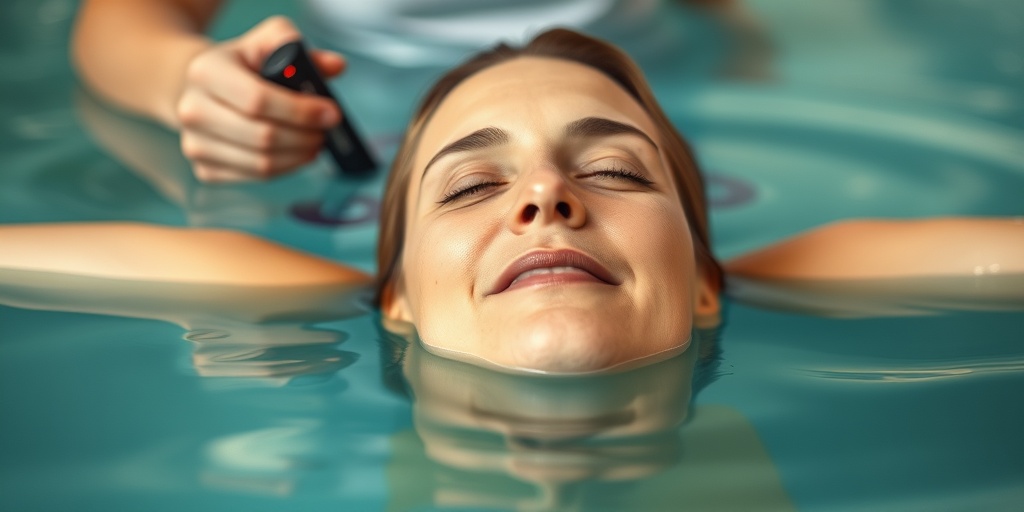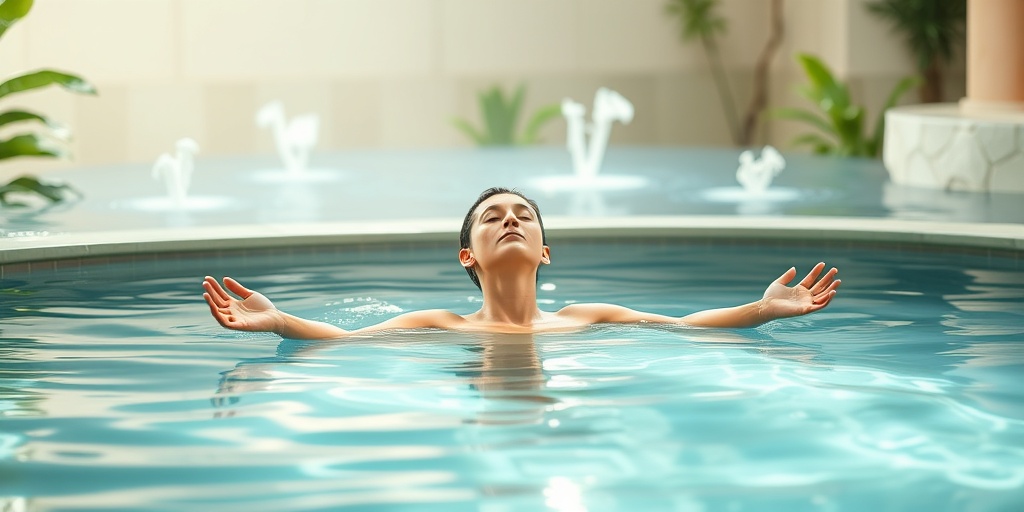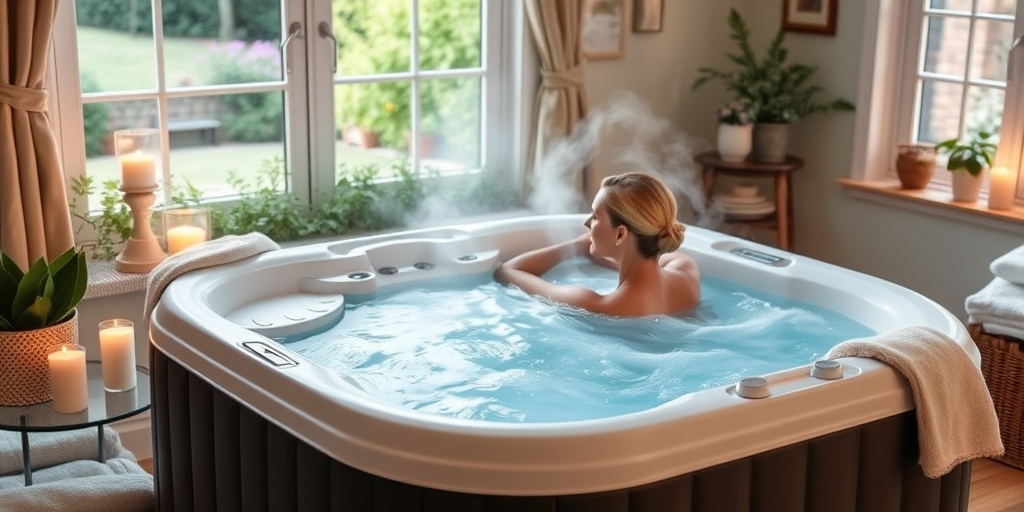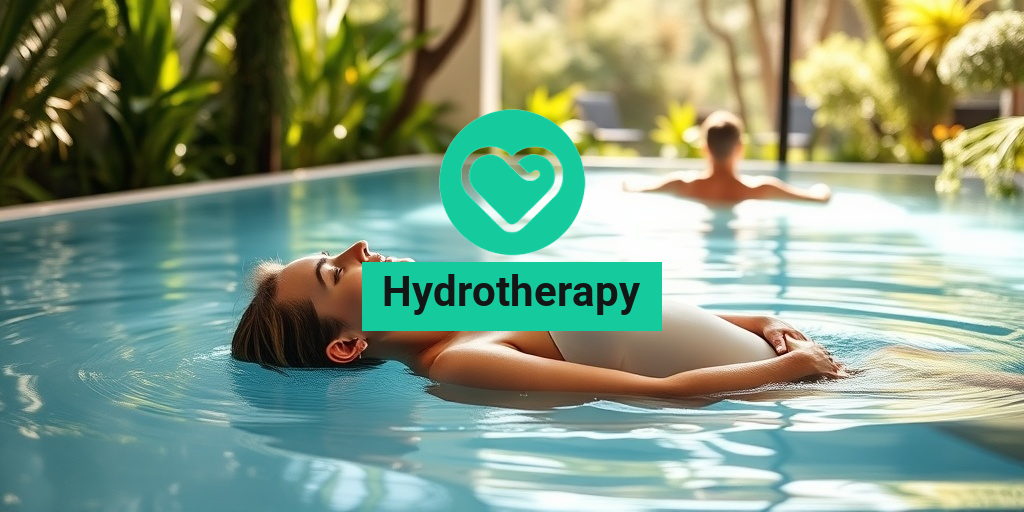What Is Hydrotherapy?
Hydrotherapy, often referred to as water therapy, is a therapeutic practice that utilizes water for pain relief and treatment. This ancient healing method has been embraced by various cultures throughout history, from the Romans who built elaborate baths to the modern spas that offer hydrotherapy treatments today. The essence of hydrotherapy lies in its ability to harness the natural properties of water—such as temperature, pressure, and buoyancy—to promote physical and mental well-being.
The Science Behind Hydrotherapy
At its core, hydrotherapy works on the principle that water can influence the body in numerous ways. The temperature of the water can either relax or stimulate the body, while the buoyancy can reduce the strain on joints and muscles. This makes hydrotherapy an excellent option for individuals recovering from injuries, managing chronic pain, or simply seeking relaxation.
Types of Hydrotherapy
There are several forms of hydrotherapy, each tailored to meet specific health needs:
- Warm Water Therapy: Often used for relaxation and muscle tension relief.
- Cold Water Therapy: Typically employed to reduce inflammation and swelling.
- Contrast Hydrotherapy: Alternating between hot and cold water to improve circulation.
- Hydrotherapy Exercises: Water-based exercises that enhance mobility and strength.
Whether you’re looking for a hydrotherapy spa experience or specific hydrotherapy exercises, this versatile treatment can be adapted to suit individual needs. If you’re searching for hydrotherapy near me, many wellness centers and spas offer specialized programs.
Hydrotherapy Benefits
The benefits of hydrotherapy are vast and varied, making it a popular choice for many seeking alternative or complementary therapies. Here are some of the key advantages:
1. Pain Relief
One of the most significant benefits of hydrotherapy is its ability to alleviate pain. The warmth of the water can help relax muscles, reduce tension, and improve circulation, which can be particularly beneficial for those suffering from conditions like arthritis or fibromyalgia. Many individuals report a noticeable decrease in pain levels after just a few sessions.
2. Improved Mobility
For those recovering from surgery or injury, hydrotherapy can be a game-changer. The buoyancy of water allows for gentle movement without putting undue stress on the body. This can help improve range of motion and facilitate rehabilitation. Hydrotherapy exercises are often recommended by physical therapists to aid recovery.
3. Stress Reduction and Relaxation
In our fast-paced world, stress management is crucial for overall health. Hydrotherapy provides a serene environment that promotes relaxation. The soothing properties of water can help lower cortisol levels, leading to reduced stress and anxiety. Many people find that a visit to a hydrotherapy spa is a perfect way to unwind and recharge.
4. Enhanced Circulation
Water therapy can stimulate blood flow, which is essential for delivering oxygen and nutrients to tissues. Improved circulation can also aid in the healing process and promote overall cardiovascular health. Alternating between hot and cold water, known as contrast hydrotherapy, is particularly effective in enhancing circulation.
5. Skin Health
Hydrotherapy can also benefit the skin. Warm water can open up pores, allowing for deep cleansing, while cold water can tighten the skin and improve its appearance. Some hydrotherapy treatments, such as hydrotherapy colonic, are specifically designed to detoxify the body and promote healthy skin.
6. Benefits for Pets
Did you know that hydrotherapy is not just for humans? Hydrotherapy for dogs is gaining popularity as a way to help pets recover from injuries or surgeries. Many veterinary clinics now offer hydrotherapy for dogs near me, providing a safe and effective way for our furry friends to regain strength and mobility.
In conclusion, hydrotherapy is a versatile and effective treatment option that offers numerous benefits for both physical and mental health. Whether you’re looking to relieve pain, improve mobility, or simply relax, hydrotherapy can be a valuable addition to your wellness routine. For more evidence-based health answers, consider visiting Yesil Health AI for reliable information.
So, why not explore the world of hydrotherapy today? Your body and mind will thank you! 💧✨

Hydrotherapy Techniques
Hydrotherapy, often referred to as water therapy, utilizes the unique properties of water to promote healing and wellness. This versatile treatment can be applied in various forms, each tailored to meet specific health needs. Here are some popular hydrotherapy techniques that you might find beneficial:
1. Aquatic Exercises
Aquatic exercises are performed in a pool and are particularly effective for individuals with joint pain or mobility issues. The buoyancy of water reduces stress on the joints, allowing for a greater range of motion. Some common aquatic exercises include:
- Water walking: A simple yet effective way to improve cardiovascular health.
- Resistance training: Using water weights or resistance bands to build strength.
- Aqua aerobics: A fun group activity that combines music and movement.
2. Contrast Hydrotherapy
This technique involves alternating between hot and cold water treatments. The contrasting temperatures stimulate circulation and can help reduce inflammation. It’s often used for:
- Muscle recovery: Athletes frequently use contrast hydrotherapy to speed up recovery after intense workouts.
- Chronic pain management: Alternating temperatures can alleviate pain and stiffness.
3. Hydrotherapy Baths
Soaking in a hydrotherapy bath can be incredibly soothing. These baths often include:
- Mineral salts: Adding Epsom salts can enhance relaxation and muscle recovery.
- Essential oils: Aromatherapy can be integrated for additional therapeutic benefits.
Hydrotherapy baths are perfect for unwinding after a long day or for treating specific ailments like arthritis or fibromyalgia. 🛁
4. Hydrotherapy Massage
This technique combines the benefits of massage with the soothing properties of water. Hydrotherapy massage can be performed in a spa setting, where jets of water are used to target specific muscle groups. Benefits include:
- Deep relaxation: The warm water helps to relax muscles, making the massage more effective.
- Improved circulation: The pressure from the water jets stimulates blood flow.
5. Colonic Hydrotherapy
Colonic hydrotherapy, also known as colon cleansing, involves the gentle infusion of water into the colon to remove waste and toxins. This technique is believed to promote digestive health and can be beneficial for:
- Constipation relief: Helps to soften stool and promote regular bowel movements.
- Detoxification: Aids in flushing out harmful substances from the body.
Hydrotherapy for Pain Relief
Hydrotherapy is widely recognized for its effectiveness in alleviating various types of pain. Whether you’re dealing with chronic pain, post-surgery discomfort, or muscle soreness, hydrotherapy can provide significant relief. Here’s how:
1. Reducing Inflammation
The application of warm water can help to dilate blood vessels, improving circulation and reducing inflammation. This is particularly beneficial for conditions such as:
- Arthritis: Warm water can ease stiffness and improve joint mobility.
- Sports injuries: Hydrotherapy can accelerate healing by increasing blood flow to injured areas.
2. Muscle Relaxation
Warm water has a natural ability to relax tense muscles. This is especially helpful for individuals suffering from:
- Chronic back pain: Soaking in warm water can relieve tension in the back muscles.
- Fibromyalgia: Hydrotherapy can help manage widespread pain and improve overall comfort.
3. Stress Relief
Stress can exacerbate pain, creating a vicious cycle. Hydrotherapy promotes relaxation, which can help break this cycle. Techniques such as:
- Warm baths: Soaking in a warm bath can significantly reduce stress levels.
- Aqua yoga: Combining yoga with water can enhance relaxation and mindfulness.
Incorporating hydrotherapy into your wellness routine can lead to improved physical and mental health. Whether you’re seeking relief from pain or simply looking to relax, hydrotherapy offers a variety of techniques to suit your needs. 🌊✨

Hydrotherapy in Rehabilitation
Hydrotherapy, often referred to as water therapy, is a powerful tool in the field of rehabilitation. It utilizes the unique properties of water to aid in recovery from injuries, surgeries, and various health conditions. The buoyancy of water reduces stress on joints and muscles, making it an ideal environment for rehabilitation exercises.
Benefits of Hydrotherapy in Rehabilitation
- Reduced Pain: The warmth of the water can help alleviate pain and muscle tension, allowing patients to engage in therapeutic exercises more comfortably.
- Improved Mobility: Hydrotherapy encourages movement without the strain that traditional exercises may impose, promoting flexibility and range of motion.
- Enhanced Circulation: The hydrostatic pressure of water can improve blood circulation, which is crucial for healing tissues and reducing swelling.
- Psychological Benefits: Being in water can have a calming effect, reducing anxiety and promoting a positive mindset during recovery.
Common Hydrotherapy Techniques in Rehabilitation
There are several techniques used in hydrotherapy that can be particularly effective in rehabilitation settings:
- Water Exercises: These include gentle movements and stretches performed in a pool, which can help strengthen muscles and improve coordination.
- Contrast Hydrotherapy: Alternating between hot and cold water can stimulate circulation and reduce inflammation.
- Hydrotherapy Pools: Specialized pools equipped with jets and varying depths allow for tailored rehabilitation programs.
Who Can Benefit from Hydrotherapy?
Hydrotherapy is suitable for a wide range of individuals, including:
- Those recovering from orthopedic surgeries, such as knee or hip replacements.
- Individuals with chronic pain conditions, like arthritis or fibromyalgia.
- Patients undergoing physical therapy for sports injuries.
- People with neurological conditions, such as stroke or multiple sclerosis.
Finding a hydrotherapy spa near you can be a great first step in exploring this therapeutic option. Many facilities offer specialized programs tailored to individual needs, ensuring a personalized approach to recovery. 🌊
Hydrotherapy for Stress Relief
In today’s fast-paced world, stress has become a common issue affecting many individuals. Hydrotherapy offers a natural and effective way to combat stress and promote relaxation. The soothing properties of water can help calm the mind and body, making it an excellent choice for stress relief.
How Hydrotherapy Reduces Stress
- Relaxation Response: Immersion in warm water triggers the body’s relaxation response, reducing levels of cortisol, the stress hormone.
- Muscle Relaxation: The warmth of the water helps to relax tense muscles, alleviating physical symptoms of stress.
- Mindfulness and Meditation: Hydrotherapy sessions can serve as a form of mindfulness practice, allowing individuals to focus on their breathing and the sensations of water.
Popular Hydrotherapy Techniques for Stress Relief
There are various hydrotherapy techniques that can be particularly beneficial for stress relief:
- Hydrotherapy Massage: Combining massage techniques with water can enhance relaxation and relieve tension.
- Soaking in Hot Tubs: The buoyancy and heat of hot tubs can provide immediate stress relief and promote a sense of well-being.
- Floatation Therapy: Floating in a sensory deprivation tank can help individuals disconnect from external stressors and achieve deep relaxation.
Finding Hydrotherapy for Stress Relief
If you’re looking for hydrotherapy near you, consider visiting local spas or wellness centers that offer hydrotherapy services. Many facilities provide tailored programs that focus on relaxation and stress management, ensuring you receive the benefits of this therapeutic practice. 🧘♀️
Incorporating hydrotherapy into your routine can be a transformative experience, helping you manage stress and enhance your overall well-being. Whether through rehabilitation or relaxation, the healing power of water is undeniable. 💧

Hydrotherapy Safety Precautions
Hydrotherapy, the therapeutic use of water, can be an incredibly beneficial treatment for various ailments, but it’s essential to prioritize safety to maximize its benefits. Whether you’re visiting a hydrotherapy spa or practicing at home, understanding the necessary precautions can help prevent accidents and ensure a positive experience. Here are some key safety tips to keep in mind:
Consult with a Healthcare Professional
Before starting any hydrotherapy regimen, it’s crucial to consult with a healthcare provider, especially if you have pre-existing conditions such as:
- Heart disease
- Diabetes
- Respiratory issues
- Skin conditions
Your doctor can provide personalized advice and help you determine the most suitable hydrotherapy techniques for your needs.
Stay Hydrated
Water therapy can be dehydrating, especially if you’re using hot water. Make sure to drink plenty of fluids before and after your hydrotherapy sessions to maintain hydration levels. This is particularly important if you’re engaging in hydrotherapy exercises that may cause sweating.
Monitor Water Temperature
When using hot water, always check the temperature before entering. Water that is too hot can lead to burns or overheating. A safe temperature range is typically between 92°F and 100°F (33°C to 38°C). If you feel dizzy or uncomfortable, exit the water immediately.
Be Mindful of Slippery Surfaces
Water can create slippery surfaces, increasing the risk of falls. To prevent accidents:
- Use non-slip mats in your home or at the spa.
- Wear water shoes if available.
- Be cautious when entering and exiting pools or tubs.
Limit Session Duration
Prolonged exposure to water, especially hot water, can lead to overheating or fatigue. It’s advisable to limit your hydrotherapy sessions to:
- 15-30 minutes for hot water
- 30-60 minutes for warm water
Take breaks as needed, and listen to your body’s signals.
Supervise Children and Pets
If you’re incorporating hydrotherapy into your family routine, always supervise children and pets. For instance, hydrotherapy for dogs can be beneficial, but it’s essential to ensure they are safe and comfortable in the water. Consider using flotation devices for pets that are not strong swimmers.
Hydrotherapy at Home
Bringing hydrotherapy into your home can be a convenient and effective way to enhance your wellness routine. With the right setup and techniques, you can enjoy the benefits of water therapy without needing to visit a spa. Here are some practical ways to incorporate hydrotherapy at home:
Creating a Hydrotherapy Space
Designate a specific area in your home for hydrotherapy. This could be a bathtub, a shower, or even a small inflatable pool. Ensure the space is clean, comfortable, and equipped with:
- Non-slip mats
- Comfortable seating (if applicable)
- Access to towels and hydration
Types of Hydrotherapy You Can Do at Home
There are several hydrotherapy techniques you can easily practice at home:
Warm Water Baths
Soaking in a warm bath can help relax muscles and relieve tension. Consider adding Epsom salts or essential oils for added benefits. Aim for a bath duration of 20-30 minutes for optimal relaxation.
Contrast Hydrotherapy
This technique involves alternating between hot and cold water. Start with hot water for 3-4 minutes, followed by cold water for 1-2 minutes. Repeat this cycle several times to improve circulation and reduce inflammation.
Hydrotherapy Exercises
If you have access to a pool, consider incorporating hydrotherapy exercises into your routine. Water provides resistance, making it an excellent medium for low-impact workouts. Some effective exercises include:
- Water walking or jogging
- Leg lifts
- Arm curls with water weights
Utilizing Hydrotherapy Equipment
Investing in hydrotherapy equipment can enhance your home experience. Consider items like:
- Water weights for resistance training
- Inflatable pools for larger spaces
- Hydrotherapy jets for targeted relief
By following these safety precautions and incorporating hydrotherapy into your home routine, you can enjoy the numerous benefits of this therapeutic practice while ensuring a safe and effective experience. 🌊✨

Frequently Asked Questions about Hydrotherapy
What is Hydrotherapy?
Hydrotherapy is a therapeutic practice that utilizes water for pain relief and treatment. It can involve various techniques, including baths, pools, and water exercises, aimed at promoting physical and mental well-being.
How does Hydrotherapy work?
The principles of hydrotherapy are based on the physical properties of water, such as temperature and buoyancy. These properties can help relax muscles, improve circulation, and alleviate pain, making it an effective treatment for various conditions.
What are the benefits of Hydrotherapy?
- Relief from pain: It can help reduce chronic pain and muscle tension.
- Improved circulation: The warmth of water can enhance blood flow.
- Stress reduction: Immersion in water can promote relaxation and reduce stress levels.
- Rehabilitation: It is often used in physical therapy to aid recovery from injuries.
Is Hydrotherapy safe for everyone?
While hydrotherapy is generally safe, it may not be suitable for individuals with certain medical conditions, such as severe cardiovascular issues or skin infections. Always consult with a healthcare professional before starting any new treatment.
Can Hydrotherapy be used for dogs?
Yes! Hydrotherapy for dogs is becoming increasingly popular as a method for rehabilitation and pain management. It can help dogs recover from surgery, improve mobility, and maintain a healthy weight.
Where can I find Hydrotherapy services near me?
To find hydrotherapy services in your area, you can search online for hydrotherapy near me or check local wellness centers and spas that offer these treatments.
What types of Hydrotherapy treatments are available?
- Hydrotherapy baths: Soaking in warm water to relieve tension.
- Hydrotherapy pools: Specialized pools designed for therapeutic exercises.
- Hydrotherapy massage: Combining water and massage techniques for relaxation.
- Hydrotherapy exercises: Water-based exercises to improve strength and flexibility.
How often should I undergo Hydrotherapy?
The frequency of hydrotherapy sessions can vary based on individual needs and treatment goals. It is best to consult with a healthcare provider to determine the appropriate schedule for you.
Can Hydrotherapy help with weight loss?
While hydrotherapy itself is not a weight loss solution, it can support a weight loss program by providing a low-impact environment for exercise and promoting overall wellness.
Are there any side effects of Hydrotherapy?
Most people experience minimal side effects from hydrotherapy. However, some may feel lightheaded or fatigued after a session. It’s important to stay hydrated and listen to your body.
How can I get started with Hydrotherapy?
To begin your hydrotherapy journey, consider visiting a local spa or wellness center that offers these services. You can also consult with a physical therapist who specializes in water therapy for personalized guidance.




